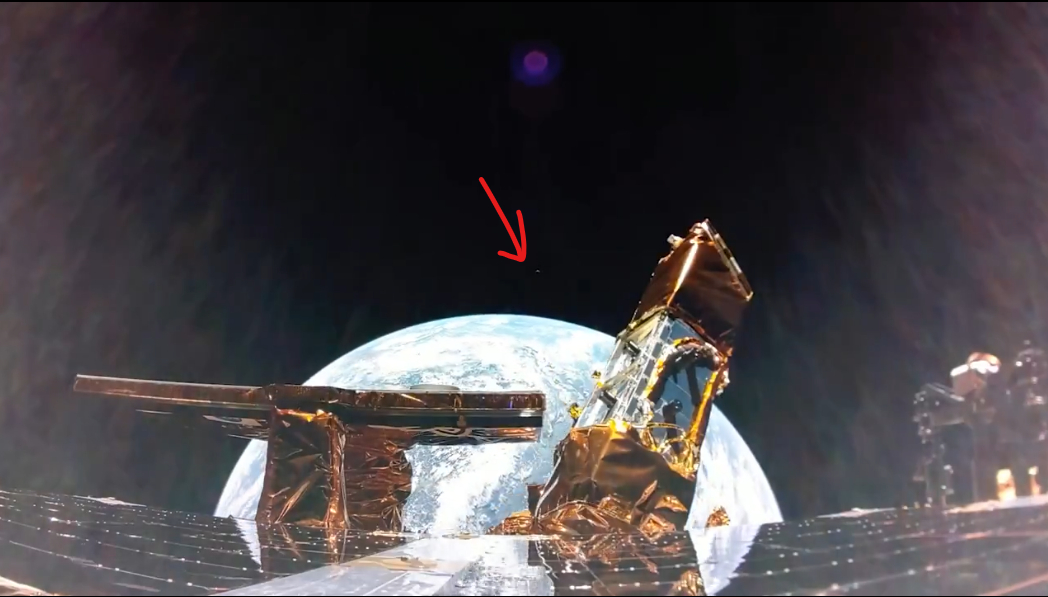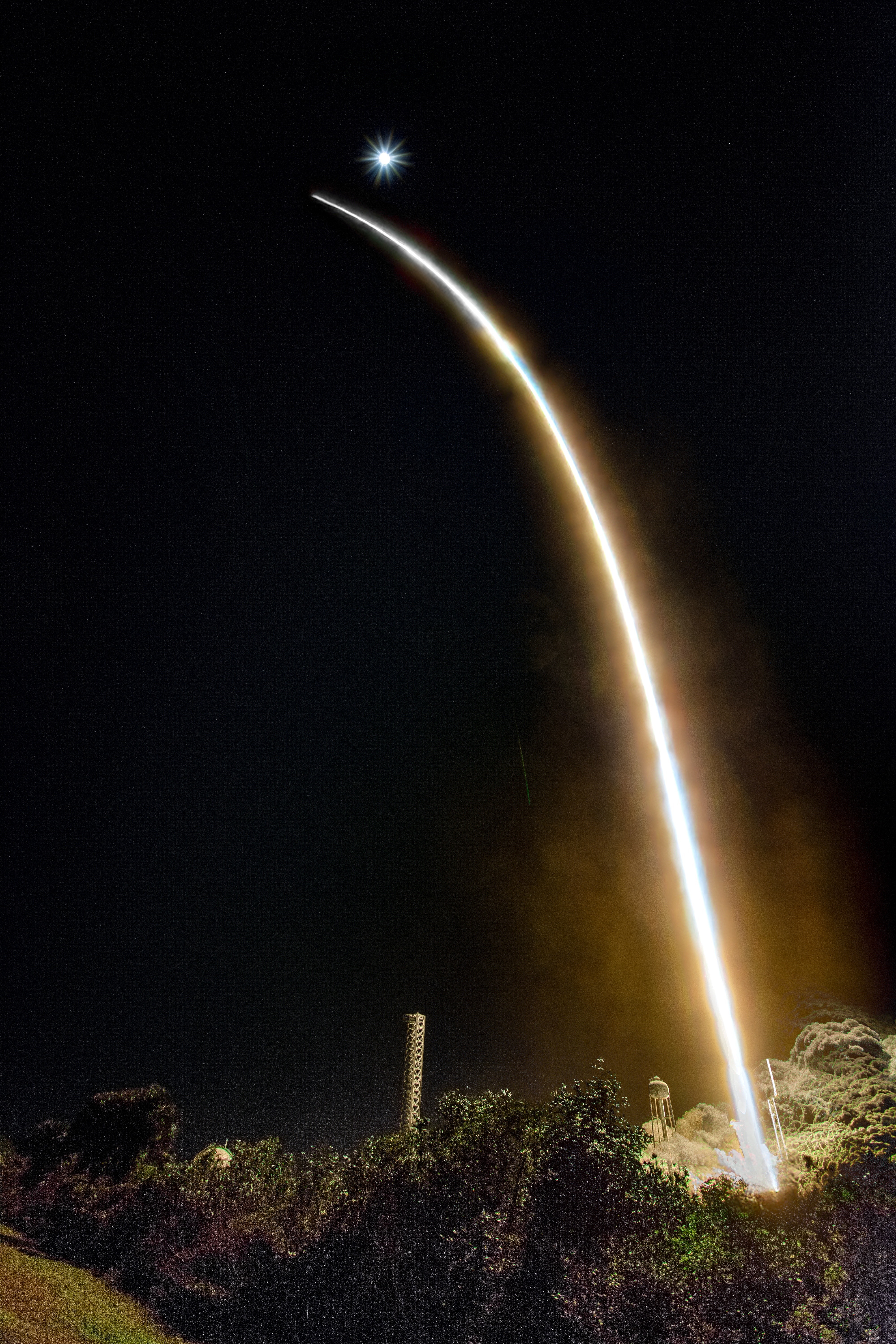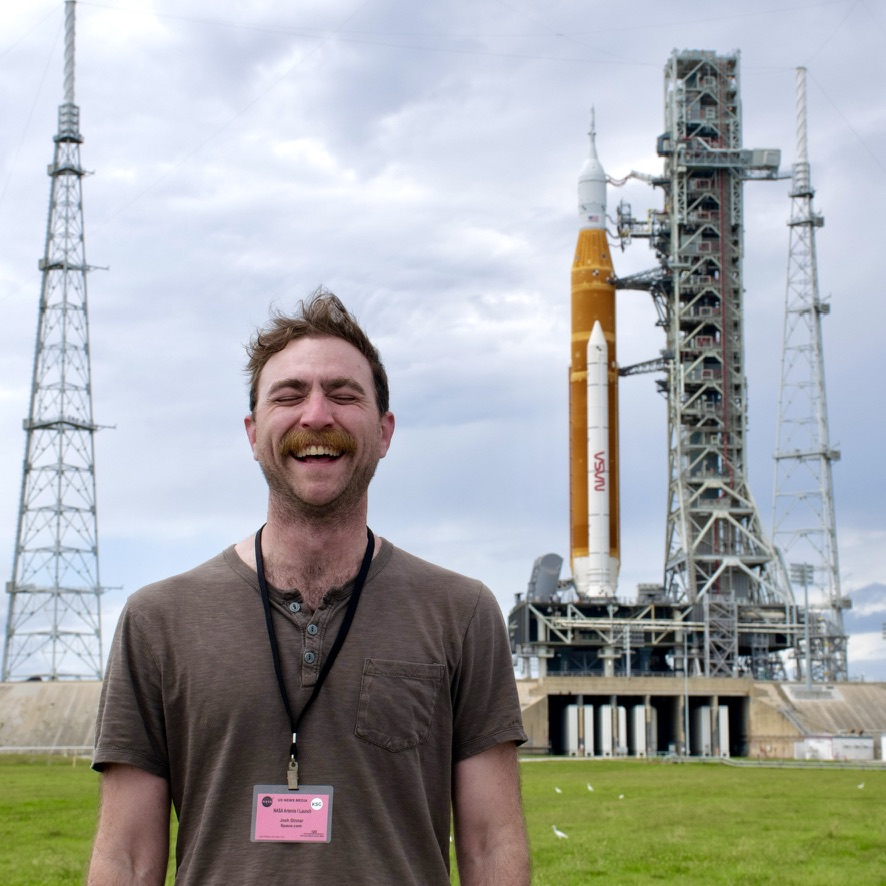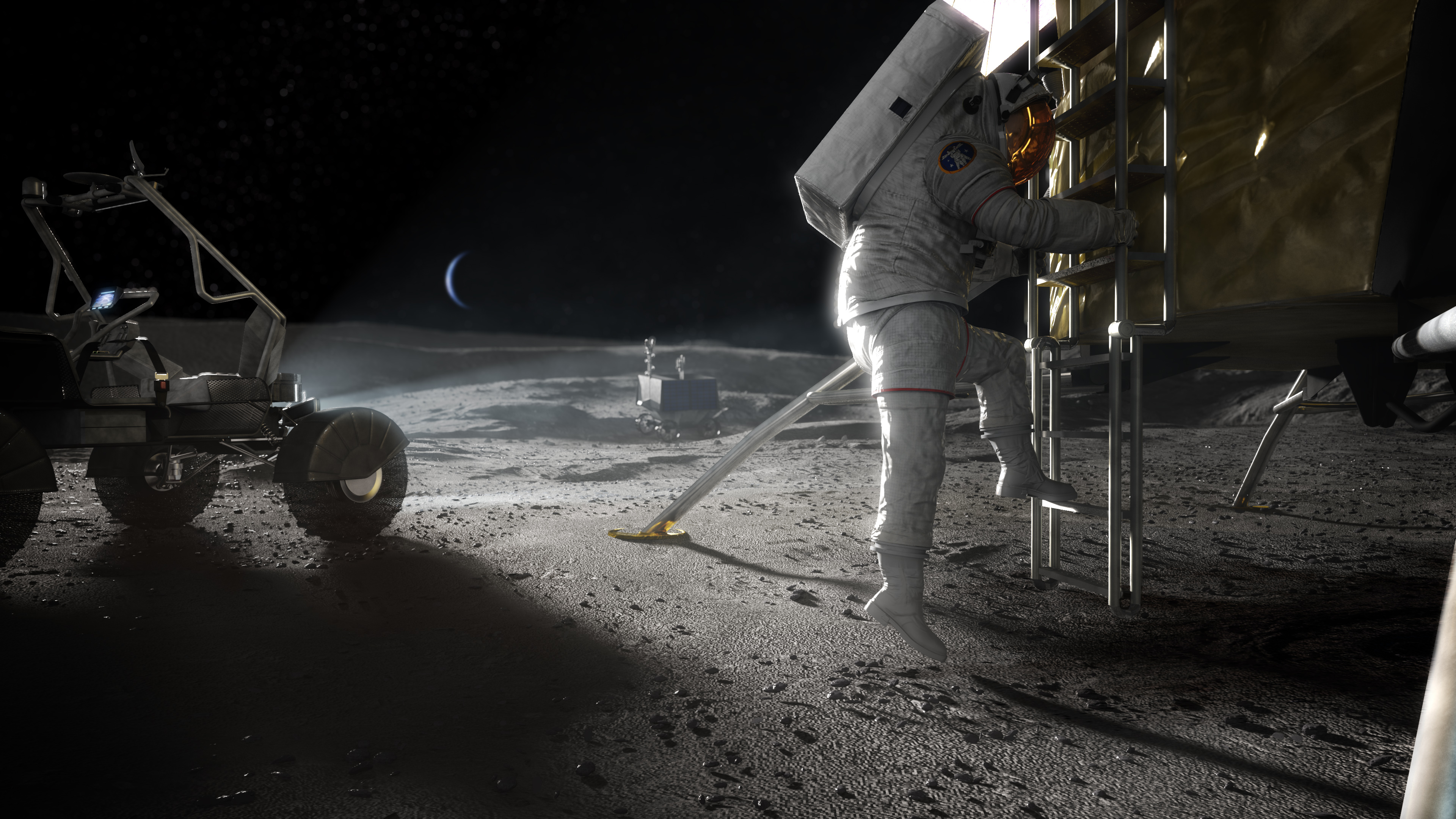Private Blue Ghost moon lander sees gorgeous lunar eclipse from Earth orbit (video)
"I spy with my little lander, a moon in the distance..."
Blue Ghost, the "little lander" from Firefly Aerospace that's headed to the moon, has captured the littlest lunar eclipse ever (as well as our hearts).
Firefly contracted SpaceX to launch the company's "Ghost Riders in the Sky" mission last month (Jan. 15) on a Falcon 9 rocket, out of NASA's Kennedy Space Center in Florida. Since then, the lander has been camped out in Earth orbit, undergoing systems checks and preparing to light its engines for a translunar injection burn, which will propel the probe on a four-day trajectory for the moon.
Until that maneuver, however, Blue Ghost has been busy above the big blue Earth, beaming home beautiful images of our planet, as well as views of its far-off final destination, the moon. Now, Blue Ghost has captured both together.

In a post on X, formerly Twitter, Firefly shared a video from Blue Ghost showing a very faint and faraway moon, seen for just a moment before the brilliantly bright Earth eclipses the celestial spec as the lander climbs up its orbit.
"I spy with my little lander, a Moon in the distance," the post reads. "Check out Blue Ghost's amazing view of Earth eclipsing the Moon as the lander travels on orbit. Our #GhostRiders can't wait to share more postcard-worthy moments as we continue on our roadtrip."
I spy with my little lander, a Moon in the distance. Check out Blue Ghost's amazing view of Earth eclipsing the Moon as the lander travels on orbit. Our #GhostRiders can't wait to share more postcard worthy moments as we continue on our roadtrip. #BGM1 pic.twitter.com/OUGfHgSPLCJanuary 31, 2025

Ghost Riders in the Sky is Firefly's first attempt to land anything on the moon. Onboard, Blue Ghost is carrying 10 NASA research payloads designed to further the space agency's understanding of the lunar environment. The mission is part of NASA's Commercial Lunar Payload Services (CLPS) program, an extension of the agency's augmented plans to eventually return astronauts to the moon through the Artemis program.
The Falcon 9 that launched Blue Ghost to orbit also carried another lunar lander along for the ride. Resilience, built by the Japanese company ispace, rode to orbit as a secondary payload aboard the rocket and will also head toward the moon. But while both landers are targeting the lunar surface, their mission timelines differ significantly from one another.
Get the Space.com Newsletter
Breaking space news, the latest updates on rocket launches, skywatching events and more!
Resilience is taking a slow and steady course toward its final landing zone in Mare Frigoris ("Sea of Cold"), in the moon's northern hemisphere. The lander's prolonged orbit and trajectory from Earth to the moon have its touchdown targeting sometime about four months from now. The probe also includes a mini-rover, named Tenacious, which will collect a sample of regolith (moon dust) to fulfill a NASA contract.
Blue Ghost, on the other hand, is about a month away from attempting a landing in Mare Crisium ("Sea of Crises"), on the northeasterm part of the moon's near side. Once on the surface, Blue Ghost will have a full lunar day — about two weeks — for its 10 CLPS payloads to fulfill their operations. Many of the mission's investigations are also focused on lunar regolith.
At the end of Blue Ghost's two weeks on the moon, the sun will set on the solar-powered lander, and the probe will power down. With its last vestiges of battery charge, the lander will record the lunar sunset and a phenomenon last observed during the final Apollo mission, in which magnetic forces agitate the regolith across the surface as the sun fades behind the horizon.
Join our Space Forums to keep talking space on the latest missions, night sky and more! And if you have a news tip, correction or comment, let us know at: community@space.com.

Josh Dinner is the Staff Writer for Spaceflight at Space.com. He is a writer and photographer with a passion for science and space exploration, and has been working the space beat since 2016. Josh has covered the evolution of NASA's commercial spaceflight partnerships and crewed missions from the Space Coast, as well as NASA science missions and more. He also enjoys building 1:144-scale model rockets and human-flown spacecraft. Find some of Josh's launch photography on Instagram and his website, and follow him on X, where he mostly posts in haiku.
